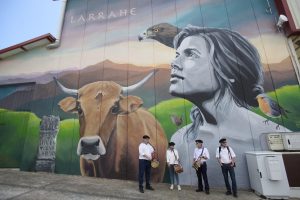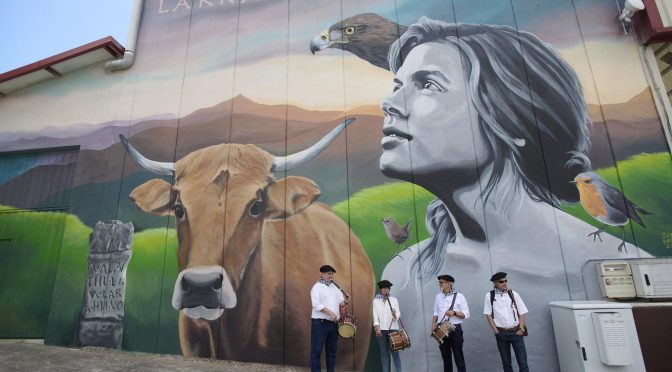The discovery of the the Hand of Irulegi showed how much history there is hidden in the mountains of Euskal Herria. Another such discovery was recently announced, this time revealing tantalizing hints about the beliefs of the ancient Basques. Though there is still so much more to learn, each discovery teaches us just a little bit more about the Basques of yesteryear.

- The Sociedad de Ciencias Aranzadi, the same group that discovered the Hand of Irulegi, has been working on excavating a monastery on Mount Arriaundi, near the town of Larunbe in Nafarroa, since 2010. The local residents had pointed out some strange features that were likely walls. Historical records mentioned a hermitage that no longer existed. It turns out, the site was the home to two religious buildings. The hermitage of San Gregorio was built on the ruins of an even older monastery dedicated to San Esteban.
- San Esteban was built during the High Middle Ages with Romanesque design elements such as curved apses. However, within the monastery’s well, the archeaologists discovered a stone alter that was much older. Dedicated to the Basque deity Larrahe or Larra, the altar has been dated to between the 1st century BCE and the 1st century CE. So some 2000 years old.
- The altar isn’t large, measuring 18x7x7 cubic inches and weighing 60 pounds. It has a round indent on the top, perhaps for pour wine or burning some offering. On the side, there is an inscription which means that “Valeria Vitella fulfilled her promise, willingly and deservedly, to Larrahe.” The inscription, except for the name of the Basque deity, is in Latin. Valeria Vitella would have been a woman who was making an offering to Larrahe.
- This isn’t the first artifact that mentions this Basque deity. In total, there are four different artifacts with Larrahe’s name, found in Muruzabal in Andione, Iruxon, Errezun, and, most recently, Larunbe.
- On two of these, the deity’s name is written Larrahi. This has led some researchers to suggest that “-hi/-he” is a suffix, maybe meaning “to” like modern “-ri” in Basque, and that the deity’s name was Larra. The “h” in the name also suggests a Basque origin as Basque and Aquitanian had this feature while other local languages did not. So does the hard double “rr” which is characteristic of Basque.
- If the deity’s name was indeed Larra, this suggests a connection to meadows, as larra means meadow in Basque. So maybe this deity was connected to pastures or farmland.
- In most news reports, and indeed in the mural that now adorns the fronton in Larunbe, Larrahe is referred to as female, as a goddess. On the Basque Wikipedia page for Larrahe, however, there are arguments presented that Larrahe was a male god. In the end, we don’t know much about Larrahe, what powers or characteristics this deity had, nor even very certainly his or her gender. Perhaps there are more archeological treasures waiting to be discovered that will shed more light on this, and other, ancient Basque deities.
A full list of all of Buber’s Basque Facts of the Week can be found in the Archive.
Primary sources: Hallado en Larunbe un altar de piedra romano dedicado por una mujer a la deidad vascona Larrahe by Pello Guerra, Naiz; Larrahe, Wikipedia; Larunbeko aldarea, Wikipedia; Larrahe baskoien dibinitateari eskainitako aldare bat aurkitu dute Larunben by Ainhoa Sarasola, Berria.
Discover more from Buber's Basque Page
Subscribe to get the latest posts sent to your email.



One thought on “Basque Fact of the Week: Discovery of an Altar to the Ancient Basque Deity Larrahe”